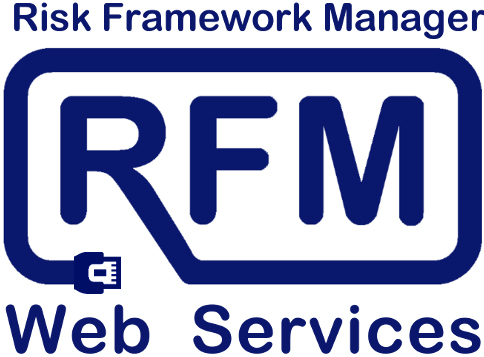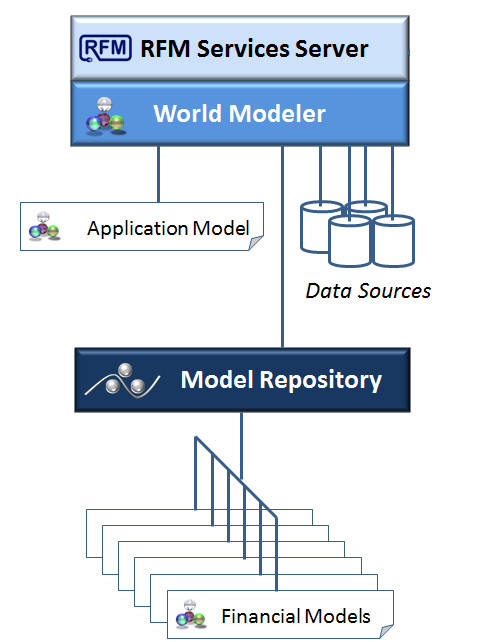 |
Application model vs. quantitative models |
◂ Prev
Next ▸
The word "model" can have many meanings, especially when a tool such as World Modeler is applied to
financial applications. To avoid any confusion, this section clearly identifies the two main contexts
in which the word "model" is used. The high-level RFM Server architecture is shown below.

High level architecture of the RFM Services Server.
1. The application model
World Modeler provides many features that make it an ideal platform for build applications in general. For this reason,
RFM chose World Modeler to provide the framework for the various RFM application modules. The application logic, user interfaces,
connections to databases, etc. are all implemented as a World Modeler "model". We refer to this as the
application model.
2. Quantitative Models
In many of the application modules included in RFM, quantitative models are used to calculate such values as probability of default (PD),
and loss given default (LGD). These take a number of inputs, apply various mathematical functions upon them, and output various
results. Unlike the application model:
- Their purpose is limited to gathering inputs for, and calculating the outputs of, specific quantitiatve models.
- There are potentially many quantitative models, managed in the Model Repository, whereas there is only one application model.
- The application model is generally common to all RFM implementations (possibly with different customizations and extensiosn), whereas
quantitative models are often developed specifically for each RFM customer's implementation.
- The RFM framework automatically loads the application model, and it remains loaded as long as the server is active.
Quantitative models are loaded and unloaded during a normal session on an as-needed basis.

